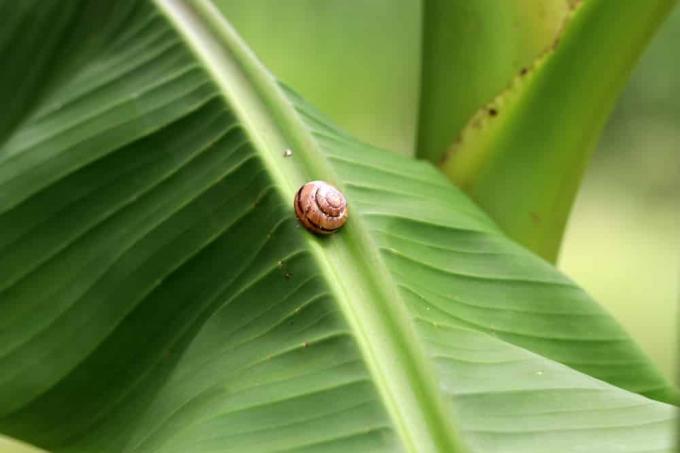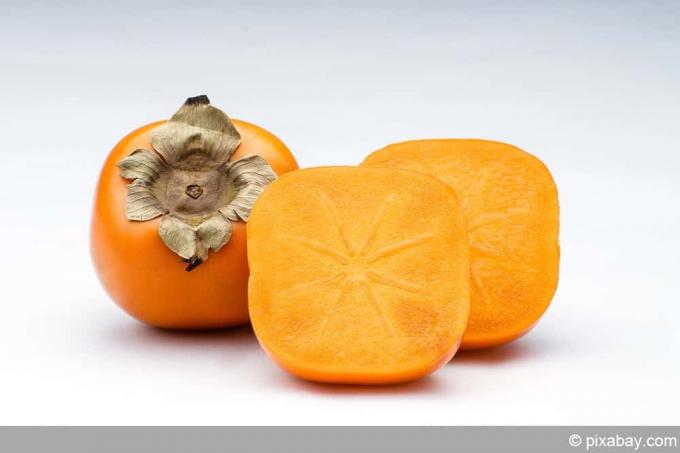

Table of contents
- Characteristics
- Origin and growing areas
- Special property: climacteric fruit
- Core: golf ball sized and poisonous
- use
- Nutritional values at a glance
- Can that much fat content be healthy? - but yes!
- Superfood with a dark side
The avocado polarizes health-conscious minds like no other fruit. For decades, the high fat content even forced fans of the mild, nutty pulp to give up with a heavy heart. The about-face came with the realization that unsaturated fatty acids are beneficial for health. Today, avocado is one of the illustrious circle of superfoods that should not be missing from any menu. This guide with a profile and nutritional information explains in detail how healthy Persea americana really is.
Characteristics
Surname: Avocado (Persea americana)
Origin: tropical rainforest in Central America
Fruit of the evergreen avocado tree from the laurel family
Common names: Avocado Pear, Alligator Pear, Butter of the Forest, Butterfruit
Size: 10-20 cm long and 7-9 cm wide
Weight: an average of 500 to 900 g, rarely 200 to 450 g or 1.5 to 2.5 kg
Color: medium to dark green or crimson to black
Peel: smooth, leathery or wrinkled
pulp: Soft when ripe, greenish yellow to golden yellow, oxidizing to dark brown
Taste: nutty-creamy, rarely sweet
Core: golf ball sized and poisonous
Specific property: climacteric fruit (after-ripening)
Use: Pure pulp as a substitute for butter, sweetened mousse (guacamole), seasoned as a dip, ingredient in cold soups and salads, filling for tortillas, chopped leaves as a condiment or tea
Botanically, an avocado is a solitary berry that thrives on the evergreen avocado tree. This tree develops a shrubby growth and reaches a height of up to 20 meters in its habitat.
Origin and growing areas

In its natural range, the rainforests of Central America, the avocado has been known as a crop for 10,000 years. It was one of the most important staple foods for the Aztecs. Today there are large growing areas around the world that are not limited to the tropical belt. Wherever a warm climate dominates, the avocado tree is cultivated, from South Africa to Israel and California to Australia and New Zealand. The fruit has been thriving in the Mediterranean region since the beginning of the 20th century. Century to serve the increasing demand in Europe. There are now more than 400 varieties on the market worldwide, of which Avocado Fuerte and Avocado Hass are very popular in Europe.
Special property: climacteric fruit
Its ability to ripen has made a significant contribution to the tropical avocado being able to gain a regular place on the menu in Europe. Avocados do not naturally ripen on the tree. Rather, Persea americana throw off the berries when they are unripe so that they can ripen on the ground and ensure numerous offspring. In plantations, the fruits are therefore picked as soon as they have reached a normal market size. During the refrigerated transport to Europe, the maturing process progresses slowly. On the store shelf, the consistency is still too hard for consumption. On the warm windowsill, ideally in the immediate vicinity of apples, a butter fruit will ripen within a few days.
Core: golf ball sized and poisonous
The large core inside is not suitable for consumption. The alkaloids it contains and the toxin persine can cause serious symptoms of poisoning in humans if consumed intentionally or unintentionally in large quantities. Many animals, such as dogs, cats or budgerigars, can be fatal if they eat an avocado stone. However, enthusiastic home gardeners do not throw away the seed, but simply grow their own avocado tree from it.
Tip:
Seedless avocados, called cocktail avocados or avocadito, are very popular. These are fruits that develop from unfertilized flowers. These are comparatively small at 5 to 8 cm and have a very thin shell. In California, South Africa and Israel, growers have discovered the gap in the market and are supplying the mini avocados to European stores.
use
The flesh of an avocado is prepared raw and uncooked for a reason. After just a short warming, the nutty, creamy taste takes on an unpleasant, bitter aroma. Therefore, the butter fruit is often simply salted and spooned out fresh. The fruit is also very popular when pureed, sweetened or salted, to be enjoyed as a puree or as a spread. Resourceful avocado lovers have discovered that the mild flavor is retained if the flesh is simply topped with cheese.
Tip:
As the profile indicates, the golden-yellow flesh reacts with an unsightly discoloration when it comes into contact with air. You can easily prevent this shortcoming by immediately sprinkling lemon juice on a freshly cut avocado fruit.
Nutritional values at a glance

Obviously, with more than 400 varieties, nutritional values in Persea americana vary. The following nutritional information from the German Research Institute for Food Chemistry nevertheless provides orientation that is suitable for everyday use:
(Data per 100 grams of edible fruit)
components
- Water 66.5g
- Fat 23.5g
- dietary fiber 6.3 g
- Protein 1.9g
- Minerals 1.4 g
- carbohydrates 0.4 g
- Calorific value 909 kJ (221 kcal)
Important minerals
- Potassium 485 mg
- Phosphorus 45 mg
- Magnesium 30 mg
- Calcium 12 mg
- iron 495 mcg
Valuable vitamins
- Vitamin C 13 mg
- Vitamin E2 1300 mcg
- Folic acid 30 µg
- Vitamin K 19 µg
Behind these nutritional values are important functions for our organism that contribute significantly to maintaining health. Potassium transports excess water away. Vitamins C and E strengthen the immune system. Iron supports the oxygen supply in the blood. Vitamin K makes a valuable contribution to the formation of blood coagulation factors.
Phosphorus and calcium are the dream team among minerals because they ensure stable bones and strong teeth. Fiber keeps digestion going. The vitamin folic acid acts as a natural bulwark against one of the most common causes of death - stroke. Since the vitamin is only found in small amounts in industrially processed foods, the avocado with its high folic acid content is just the thing.
Can that much fat content be healthy? - but yes!

The fat content of 23.5 grams does increase the number of calories. Nevertheless, these are unsaturated fatty acids, the healthy opponents of saturated fatty acids. Unsaturated fatty acids make many important vitamins available for our organism. They also lower bad LDL cholesterol and raise good HDL cholesterol. In contrast, saturated fatty acids are responsible for a variety of diseases and obesity.
They lurk in fast food, fatty meat, fatty sausages and a number of other calorie bombs and make life difficult for our liver and bile. The German Society for Nutrition advocates covering 7 to 10 percent of the daily energy requirement with unsaturated fatty acids and leaving saturated fatty acids aside.
Superfood with a dark side
From an ecological point of view, the increased cultivation of avocado trees is viewed critically. The focus is on the high consumption of valuable resources, which drives environmentalists worldwide to the palm of their hands. One kilogram of avocados consumes up to 1,000 liters of water. In Mexico alone, up to 4,000 hectares of forest are destroyed each year to make room for more cropland. Since the avocado was declared a superfood, imports into Germany have exploded from 28,000 tons in 2010 to a whopping 58,500 tons in 2016.
 garden editorial
garden editorial I write about everything that interests me in my garden.
Learn more about Exotic Fruits

Mexican mini cucumber, Melothria scabra: Care from A – Z
The Mexican mini cucumber promises a refreshing treat for the palate in the summertime. As an annual climbing plant, the tropical pumpkin plant with yellow flowers is a pretty eye-catcher in the bed and on the balcony. The pretty Melothria scabra combines its exotic charm with modest demands. Read a tried-and-tested guide to care from A to Z here.

Lulo, Solanum quitoense: Care of the Quitorange from A to Z
Lulo, Solanum quitoense or Quitorange - the South American plant and its fruits are in this country almost unknown but have some advantages both as an ornamental plant and as a fruit-bearing shrub offer. All details from care to effect can be found here.

Growing watermelons: how to grow melons yourself
Watermelons are extremely heat-loving plants, but with a few tricks they can also be cultivated in the home regions and cultivated successfully. The site conditions and care play an important role. If these factors are right, the harvest of juicy melons will be plentiful.

Zierbanane, Musa Banana - care and instructions for wintering
With its majestic shape, the ornamental banana is a welcome guest in conservatories and imaginatively designed living spaces. The tropical Musa Banana looks gorgeous in a bucket on a summery balcony. This guide provides you with detailed information about the right care and provides well-founded instructions for overwintering the tropical beauty of plants.

Planting an avocado seed – this is how you grow an avocado tree
Avocados are already a delicacy in the local kitchen and it is hard to imagine life without them. But the plant is also becoming increasingly popular in the local latitudes in tubs as a houseplant. So if you still have seeds left after processing, you can plant them.

Growing Sharon fruit - how to grow persimmon plants from seed
The Sharon fruit, also known as the persimmon tree, is not yet widespread in the local latitudes. As a rule, the tree is cultivated here in a bucket because it is not hardy. The seeds of the fruit are now also being offered more and more frequently for your own cultivation.



